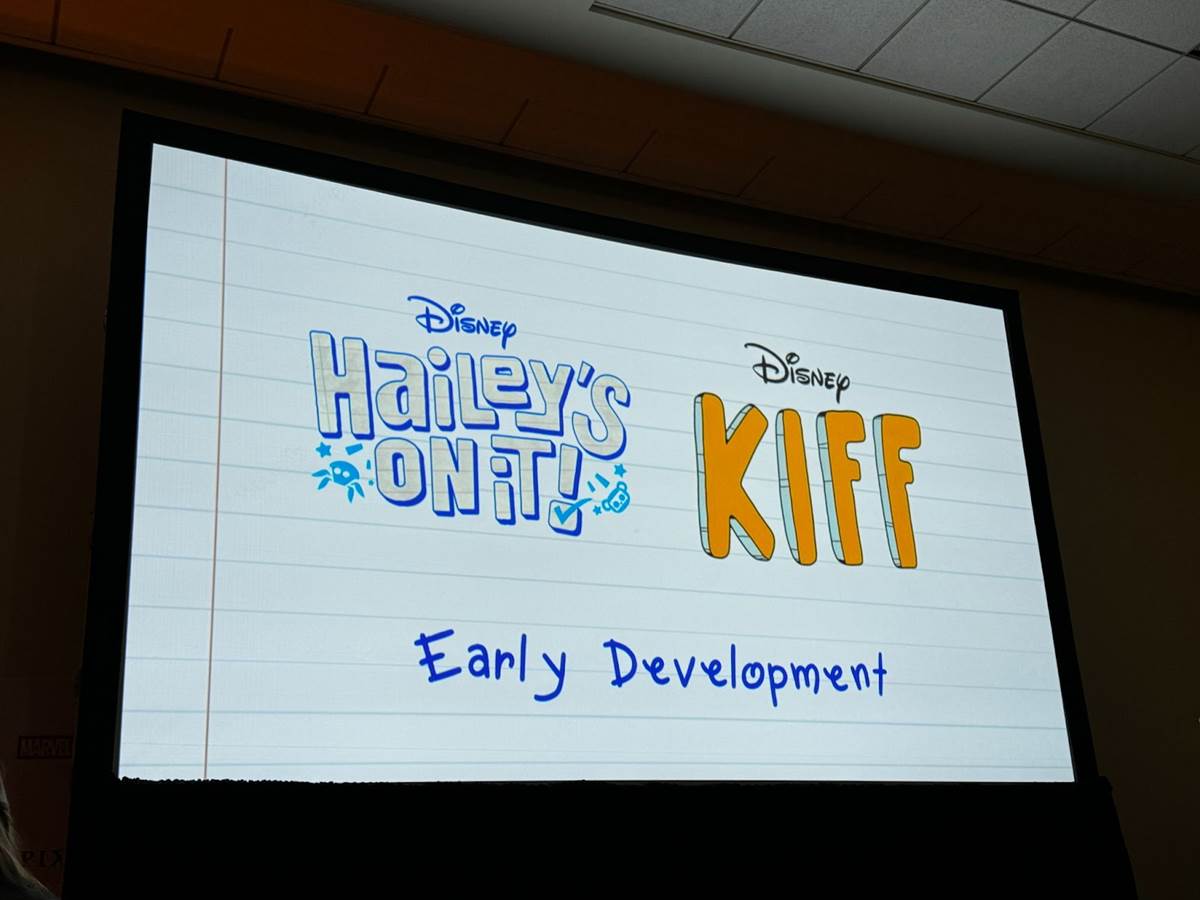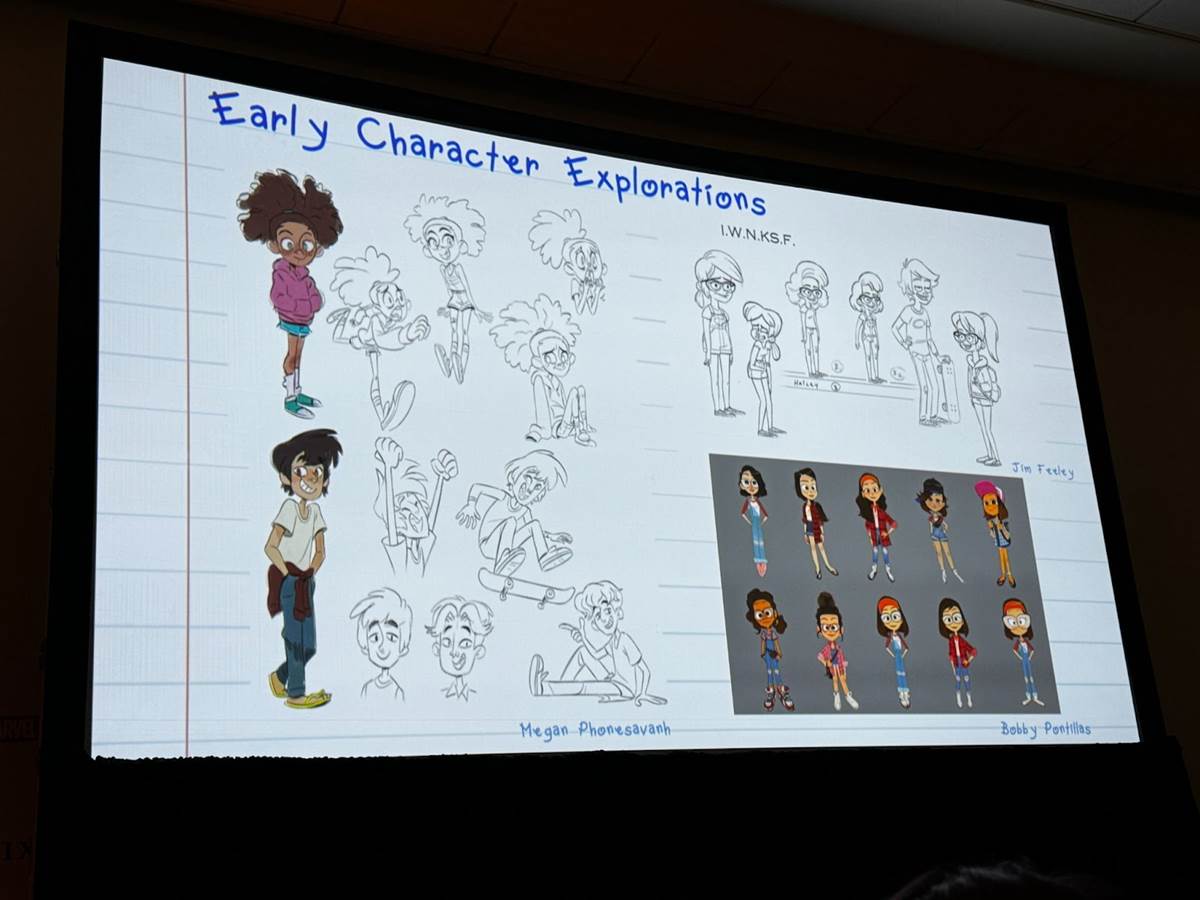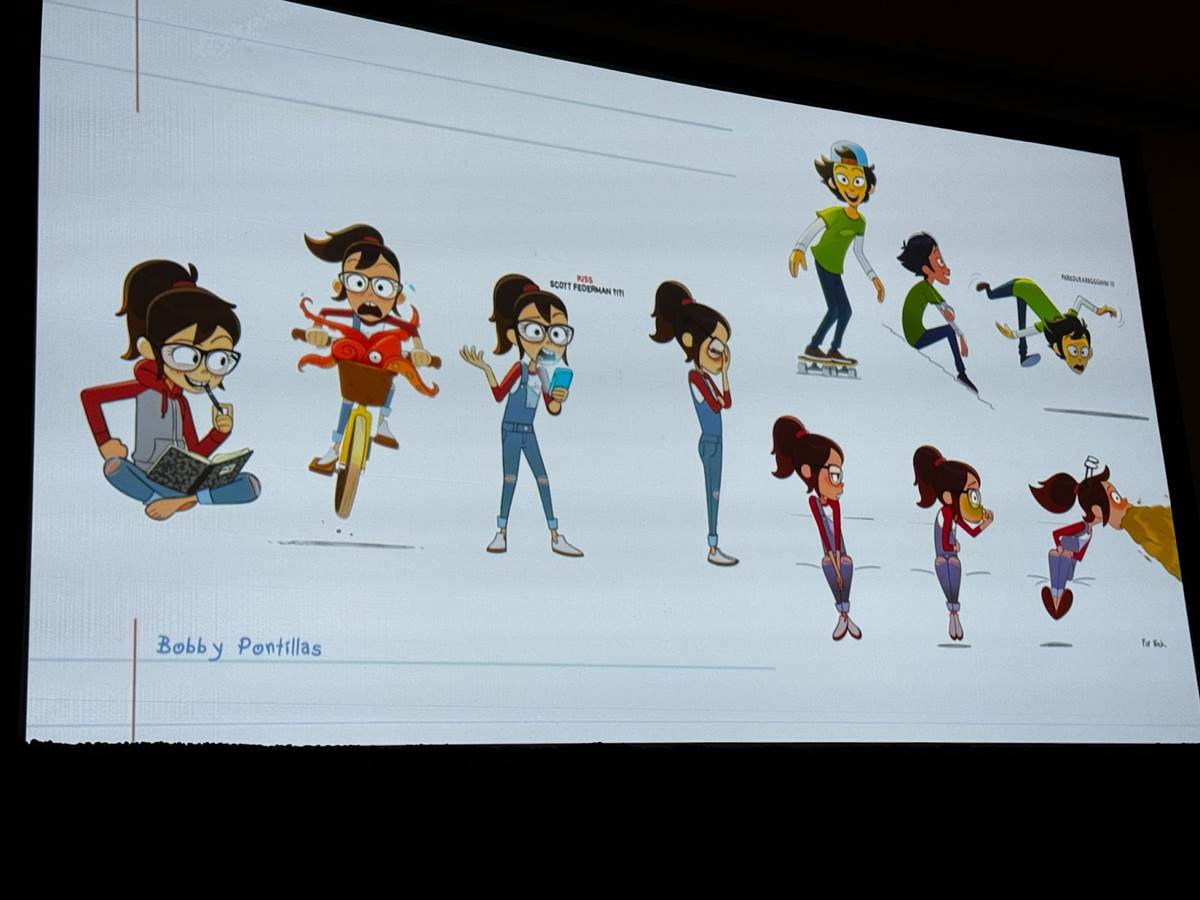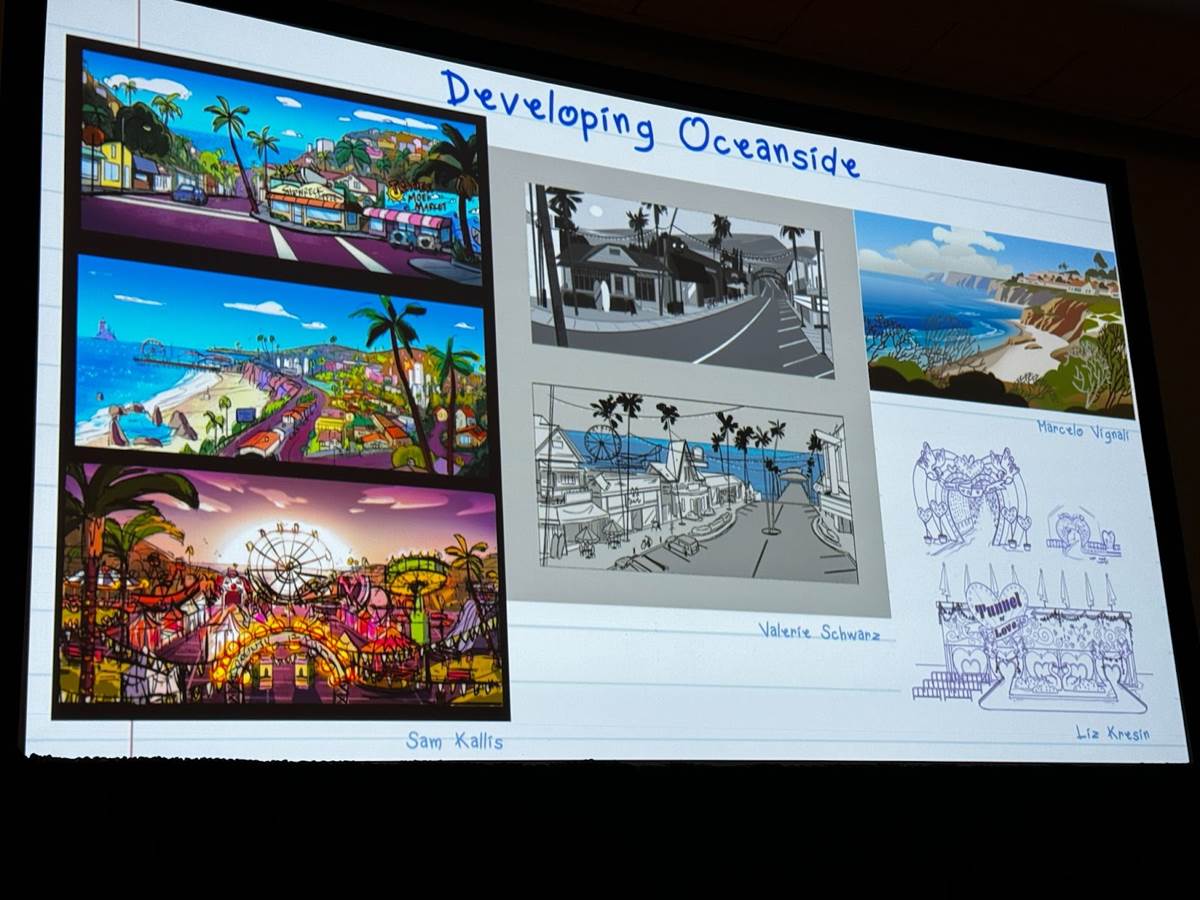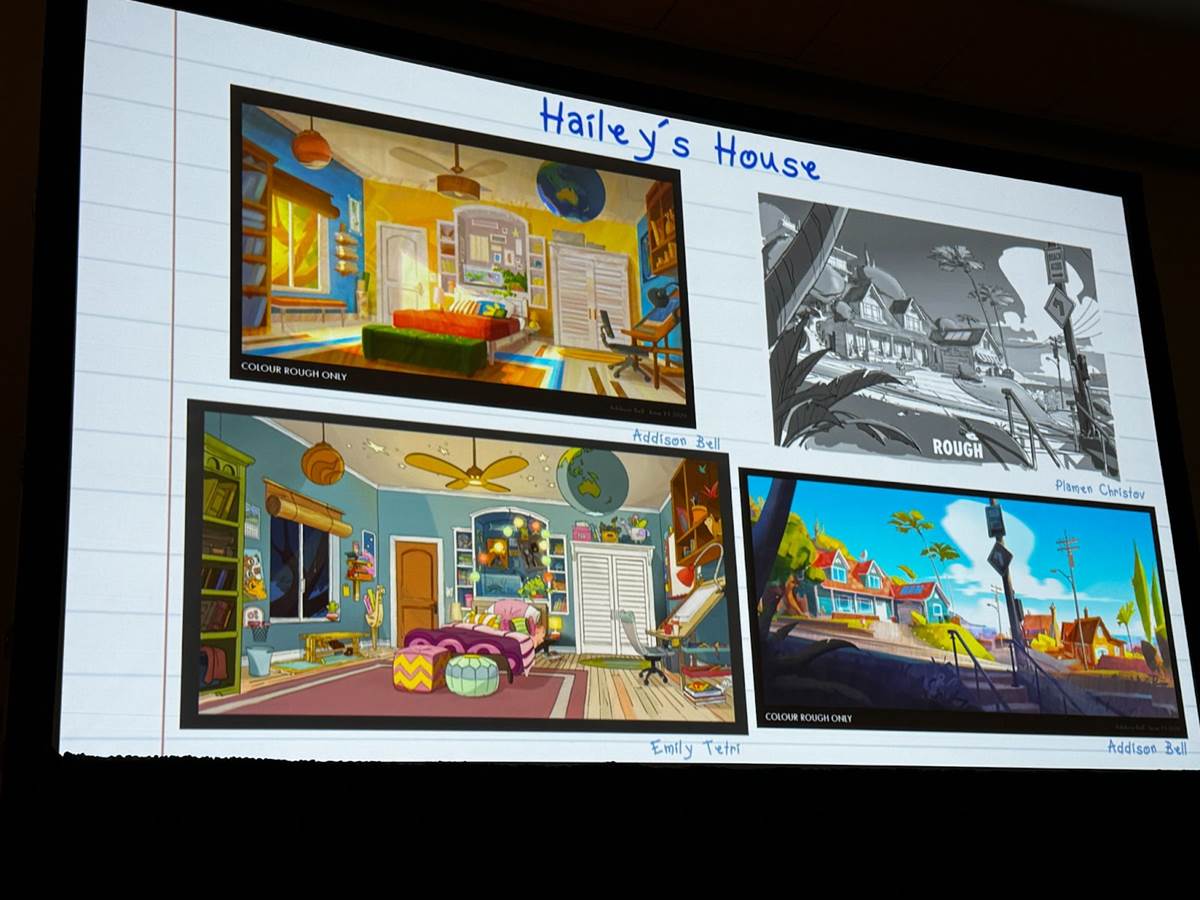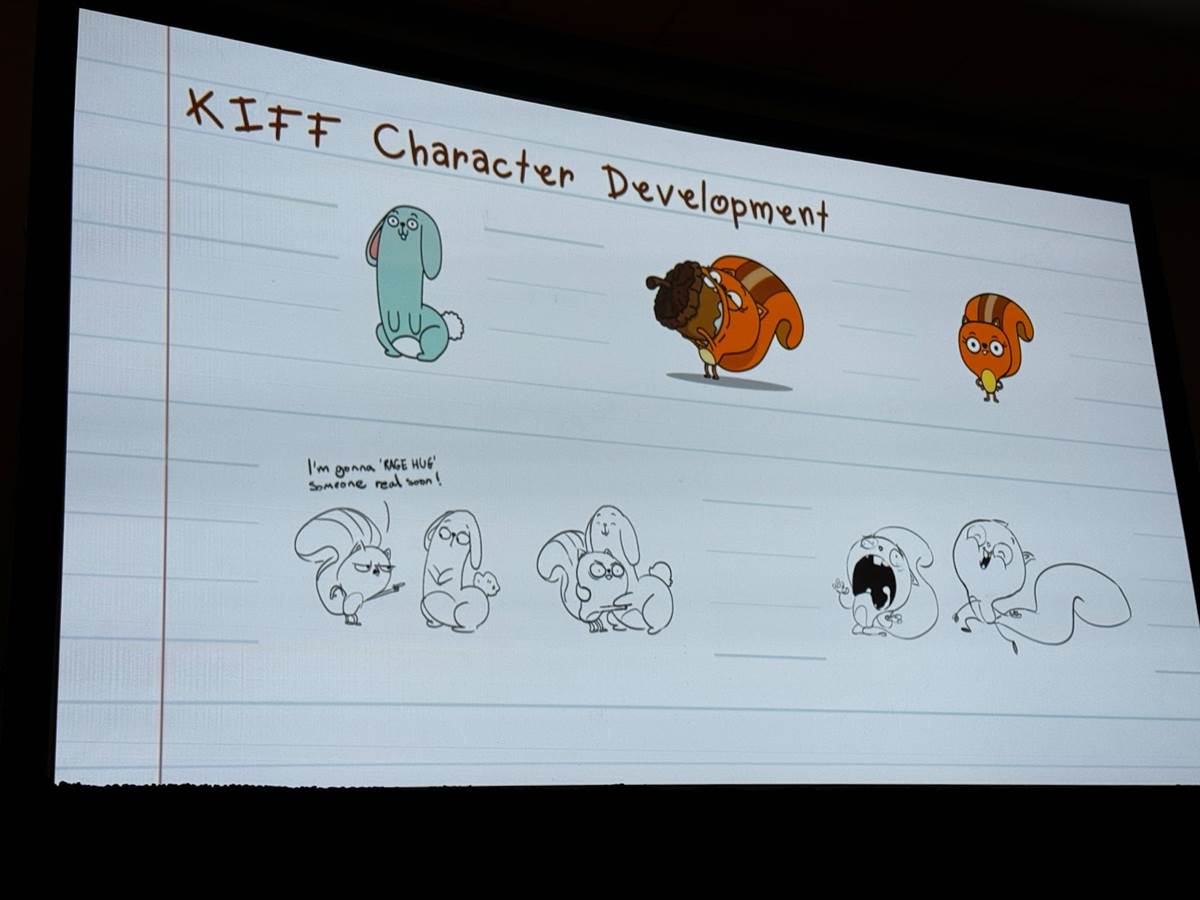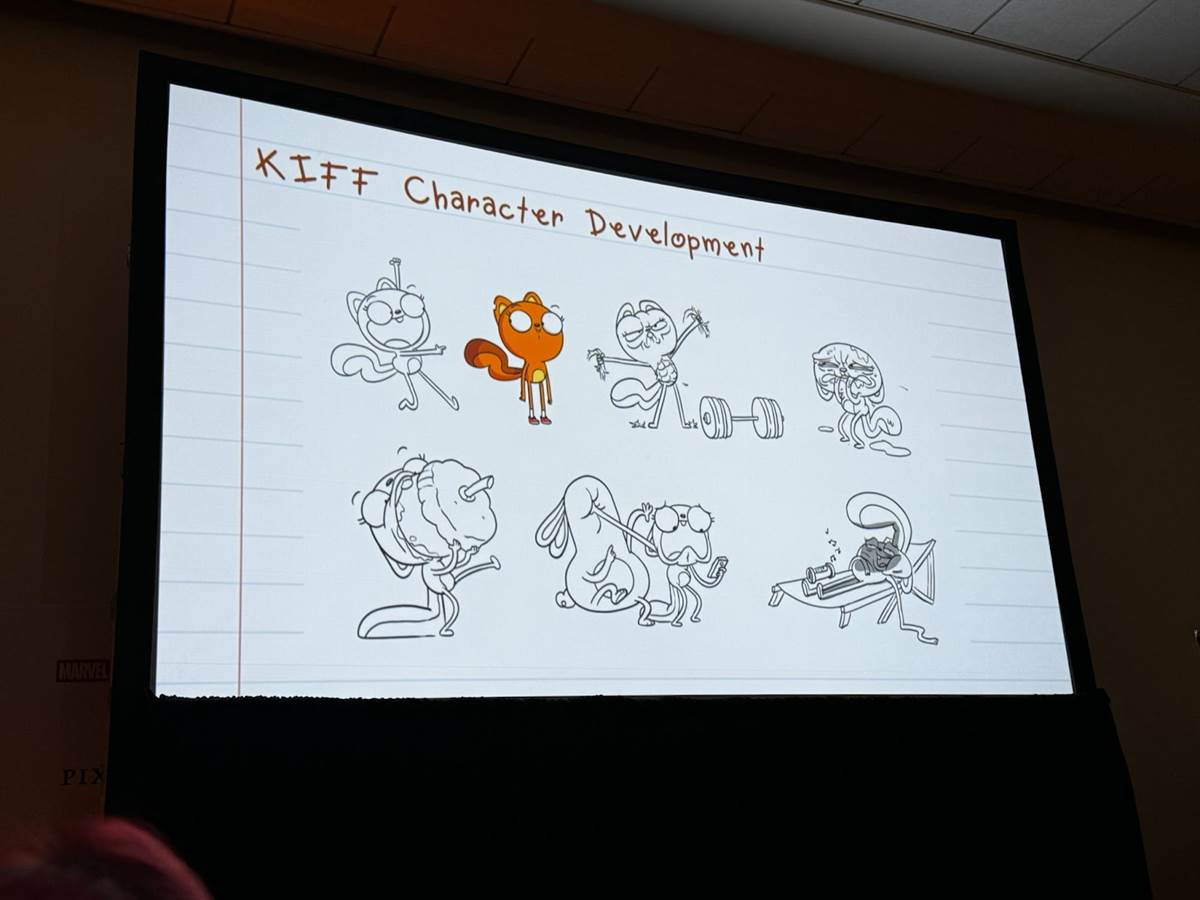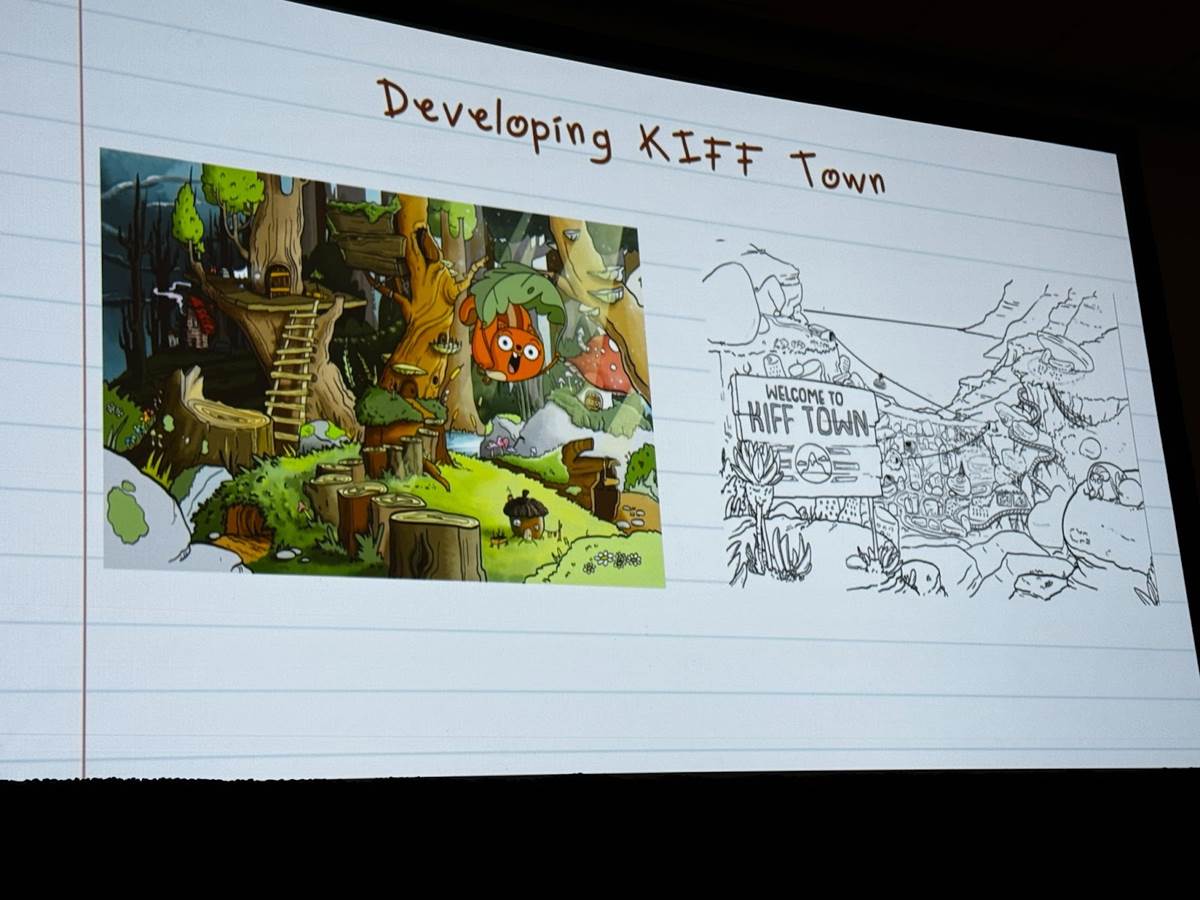LightBox Expo Recap: “From Pitch to Premiere: Developing a New Series” with “Hailey’s on It!” and “Kiff”
Sam Kallis, Creative Director of Visual Development for Disney Television Animation, opened the door for aspiring animated series creators at LightBox Expo with a panel called “From Pitch to Premiere: Developing a New Series." Joining her were the creative teams behind two of Disney’s recent animated hit series, Hailey’s on It! and Kiff. What was really interesting about the panel is that both series follow very different formats. Hailey’s on It! has continuity in addition to a roadmap for each episode, whereas Kiff is basically the animated equivalent of Seinfeld, a “show about nothing." How do you pitch these drastically different shows to the same audience? For the ease of this recap, I’ve grouped what I learned by show, although the actual presentation was a back-and-forth conversation between the two creative teams.
Hailey’s on It!
Nick Stanton and Devin Bunje are the co-creators and showrunners of Hailey’s On It!, with writing careers that began at Disney Television Animation on shows like Phineas and Ferb, The Emperor's New School, The Replacements, and Brandy & Mr. Whiskers. They made the jump to live-action on the DisneyXD series Zeke and Luther, which led them to create Gamer's Guide to Pretty Much Everything. In the case of Hailey’s On It!, Nick and Devin had a development deal with Disney and were inspired by a film from their youth that was about ordinary teens doing extraordinary things, Bill & Ted's Excellent Adventure.
Since Nick Stanton and Devin Bunje consider themselves writers, not artists, their pitch looked a little different than your typical animated series proposal. They didn’t arrive at the meeting with original artwork, but rather a vision board that would visually capture the tone they were striving for. They had also drafted up a few scripts, and they shared that it’s rare for an animated series to get a green light with just scripts. But with Disney’s approval to keep developing, they brought in Howy Parkins as an executive producer and supervising director. Howy joined the panel as the third member of the Hailey’s On It! team, having worked with Nick and Devin on The Emperor's New School. With Howy’s expertise, they were able to proceed with visual development, in addition to producing a 3-minute animation test.
The biggest consistency between the development of Hailey’s On It! and Kiff was the need to clearly define the characters. Having assembled a writer’s room, Nick and Devin would ask their team to pitch three random facts about a character. If they were funny and led to story ideas, they would be added. But they also needed to craft a roadmap for where the show is heading, since Haley needs to show real growth by the end of the first season.
Nick and Devin both grew up in the Midwest and longed to live in a setting like Bayside in Saved by the Bell, so they were instantly drawn to an oceanside environment for Hailey’s On It! She had to have a world worth fighting for, and both writers were inspired by the beauty of San Diego. Howy recalled that during the pilot, the notes the team kept getting was to add even more palm trees. Oceanside is a real city in California, and the series creators shared that they recently went there and got a personal thumbs-up from the mayor.
Hailey’s On It! wasn’t intended to have a lot of music, but development on the pilot included a moment that necessitated a song. Hailey has to ride every ride at the fair, which leads her and Scott to the Tunnel of Love. And since she now knows she has to eventually kiss Scott, Nick and Devin wanted to heighten the comedy with an on-the-nose song that would parody “Kiss the Girl" from The Little Mermaid. The writers sent the song assignment out to a few composers, with Matthew Tishler and Andrew Underberg submitting something a little different, but perfect. It ended up getting them the job as series composers, and when Disney asked if music should be a regular part of the series, it seemed like a no-brainer, especially when they got down to casting and gave Auliʻi Cravalho, the voice of Moana, the lead role. And the rest is herstory.
Kiff
Lucy Heavens and Nic Smal recalled feeling very inexperienced when they began pitching Kiff, their first series. They were working together as writers on a show that wasn’t fun, which is what they were craving. So they put their heads together and came up with two characters - a squirrel and a bunny who were quirky best friends. They would dream up funny scenarios for the two friends, which became the genesis of the series. After a year of sketching and drawing, they wrote and boarded a pilot and compiled a pitch deck full of gags to shop around.
Since Lucy and Nic were developing the show on their own, they infused Kiff and Barry with a lot of their own personality. Being based in South Africa, they also looked around for local sources of inspiration. The community environment of Cape Town helped inspire the rest of the world Kiff and Barry live in.
One major change from their pitch to the actual series is the setting. While they didn’t reveal her original name, Kiff wasn’t named Kiff. Instead, Kiff was the name of a forest town that the characters lived in. When the show ultimately arrived at Disney Television Animation, the woodland environment felt a little similar to other shows already in production, like Amphibia and The Owl House. But from Lucy and Nic’s perspective, this was a blessing. They reset the show to a city inspired by Table Mountain, which overlooks Cape Town. Now Kiff, the squirrel, lives in Table Town. Kiff’s school looks exactly like the school Nic Smal went to. Local businesses inspired parody versions that “sponsor" each episode. And they even ran away with the whole table aesthetic, with the school mascot being Timmy Table.
Nic and Lucy feel like Kiff lends itself to endless story ideas. A pizza dinner, for example, found Lucy offering Nic her last slice, which he decided to save for the next day. But that then led them to discuss who it really should belong to if it’s a “tomorrow slice." Or a childhood memory of kicking rocks on Nic’s way home from school sparked an idea for Kiff and Barry to decide to kick the same rock all the way home, leading them to all kinds of places.
Music was part of the Kiff pitch, with Nic Smal writing the song “THINGS" and recording himself on the demo. Music is a side passion of Nic’s, and he plays a variety of instruments. He and Lucy write the songs for the show and record the demos.
Advice to Future Series Creators
The benefit of attending a convention like LightBox Expo is getting to hear advice from talented people who’ve already broken into the animation industry. “A show is like a soup," Nick Stanton said about being open to collaboration and accepting other ideas. Lucy Heavens added that failure is a learning opportunity, pointing out that it took Dan Povenmire and Jeff “Swampy" Marsh 13 years of pitching Phineas and Ferb before the show was picked up. Nic Smal said they spent 5 years pitching Kiff and that they had to continually repitch the show to bosses of bosses, likening it to playing a video game (“Next boss defeated"). Asked about what goes into a pitch bible, Devin Bunje shared that there’s no specific formula, but his best tip was to have an easy-to-understand hook, well-defined character relationships, an interesting setting, and episode ideas. In Howy Parkins’ experience, having a logline is helpful, too.

Disney TV Animation Swag - Postcards
And there you have it: How to pitch an animated series in a Kiff-sized nutshell. Click here for more coverage from LightBox Expo.

